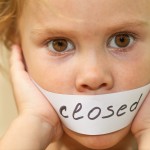
Despite improvements in levels of dental caries in recent decades this preventable disease still affects between 60-90% of children. This decay is often untreated and can lead to pain and infection which is often managed by extraction under general anaesthetic (GA). While for some children GA will be required anxiety and behaviour management approaches can play an important role in their management. However, for some the use of sedation will also be required to help reduce anxiety and facilitate provision of dental treatment.
The aim of this Cochrane review update was to evaluate the efficacy and relative efficacy of conscious sedation agents and dosages for behaviour management in paediatric dentistry.
Methods
Searches were conducted in the Cochrane Oral Health’s Trials Register, the Cochrane Central Register of Controlled Trials (CENTRAL) Medline, Embase, the US National Institutes of Health Ongoing Trials Register (ClinicalTrials.gov) and the World Health Organization International Clinical Trials Registry Platform with no restrictions on the language or date of publication.
Randomised controlled trials (RCTs) of conscious sedation comparing two or more drugs/techniques/placebo undertaken by the dentist or one of the dental team in children up to 16 years of age were considered. Quasi-randomised and cross-over trials were excluded. Two reviewers independently abstracted data and assessed risk of bias. Analysis followed Cochrane statistical guidelines. The primary outcome was behaviour, secondary outcomes were completion of treatment, postoperative anxiety and adverse effects.
Results
- 50 studies involving a total of 3704 patients were included.
- Forty studies (81%) were at considered to be at high risk of bias, nine (18%) at unclear risk and one assessed at low risk of bias.
- 34 different sedatives used with or without inhalational nitrous oxide.
- Time, mode of administration and dosage showed considerable variation.
- Meta-analysis of the primary outcomes was possible for oral midazolam versus placebo only.
- 6 small (202 participants) clinically heterogeneous studies at high or unclear risk of bias provide moderate-certainty evidence that use of oral midazolam in doses between 0.25 mg/kg to 1 mg/kg is associated with more co-operative behaviour compared to placebo. Standardised mean difference (SMD) = 1.96 (95%CI; 1.59 to 2.33) P < 0.0001, I2= 90%.
- It was not possible to draw conclusions regarding the secondary outcomes
Conclusions
The authors concluded: –
There is some moderate-certainty evidence that oral midazolam is an effective sedative agent for children undergoing dental treatment. There is a need for further well-designed and well-reported clinical trials to evaluate other potential sedation agents. Further recommendations for future research are described and it is suggested that future trials evaluate experimental regimens in comparison with oral midazolam or inhaled nitrous oxide.
Comments
This Cochrane review updates the 2012 version of this topic (Dental Elf – 15th Mar 2015) adding 14 more studies bringing the total up to 50 RCTs. This leads to a slight change in the conclusions of the review in that there is a little more evidence for the effectiveness of oral midazolam.
Despite the additional evidence the review authors highlight a lack of improvement in the quality of studies in this field calling for greater adherence to the CONSORT guidelines together with improvements in the reporting of relevant variables. They also provide more specific recommendations for future studies relating to, blinding, sample (age/size) design, baseline/outcome variables, deep v conscious sedation and the agents/regimen under test.
Links
Primary Paper
Ashley PF, Chaudhary M, Lourenço‐Matharu L. Sedation of children undergoing dental treatment. Cochrane Database of Systematic Reviews 2018, Issue 12. Art. No.: CD003877. DOI: 10.1002/14651858.CD003877.pub5.
Other references
Dental Elf – 15th Mar 2015
Weak evidence that oral midazolam is an effective sedative for children undergoing dental treatment
Dental Elf – 5th Oct 2015
Sedation or general anaesthesia for dental treatment in children
